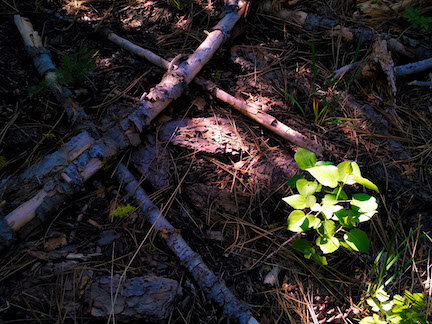Reforestation for Resilience


After the devastating wildfire season in 2020, the topic of reforestation is top of mind for many policymakers, land managers, journalists, and environmental activists.
Written by: Peter Wyrsch
After the devastating wildfire season in 2020, the topic of reforestation is top of mind for many policymakers, land managers, journalists, and environmental activists. As the frequency and severity of seasonal wildfires continues to grow, the impact to forests and watersheds will increase significantly. These forests serve as “natural infrastructure,” and provide a bulwark for stable carbon storage and the provision of clean drinking water. As such, keeping these forests as forest will be key to protecting communities downstream and mitigating the effects of climate change.
That said, reforestation involves more than simply heading out into the forest with an over-shoulder bag full of seedlings and a good shovel. That’s only the beginning of the story. The central problem to be solved is not how to get the individual trees into the ground, but rather how to keep whole stands of trees healthy into maturity. Historically, planting programs in western U.S. forests were focused on reforesting harvested areas, old burns, and other areas capable of supporting forests. Early reforestation efforts were plagued with low survival rates, meaning that foresters tended to recommend planting at high densities to ensure survival. Once trees are established, follow-up treatments are often required to promote the growth and survival of planted trees in the first five years. If high density stands are allowed to mature without additional follow-up treatments, such stands will be at much higher risk of disturbance from wildfire, insects, or disease.
Given this, land managers must consider cost across the lifetime of a forest, not just at the point of planting. To this end, Resilience Bonds can mitigate the long term costs of forest management projects. At the core of conservation finance is the underlying belief that it is possible to align environmental, social, and economic returns. There is a need for enormous increases in the financial resources deployed for conservation and for increasing recognition that conservation finance has the potential to address this need while generating positive financial returns. Especially in the context of a longer wildfire season and unpredictable fire behavior, the active and adaptive management of forests will be necessary to protect the resources on which we all rely.
Peter Wyrsch is a Senior Project Associate at Blue Forest. He holds a Master of Forestry from the Wildland Fire Science Lab at UC Berkeley, where his graduate research focused on post-fire reforestation in California and the ecological impact of prescribed fire on mixed conifer forests in the Sierra Nevada.